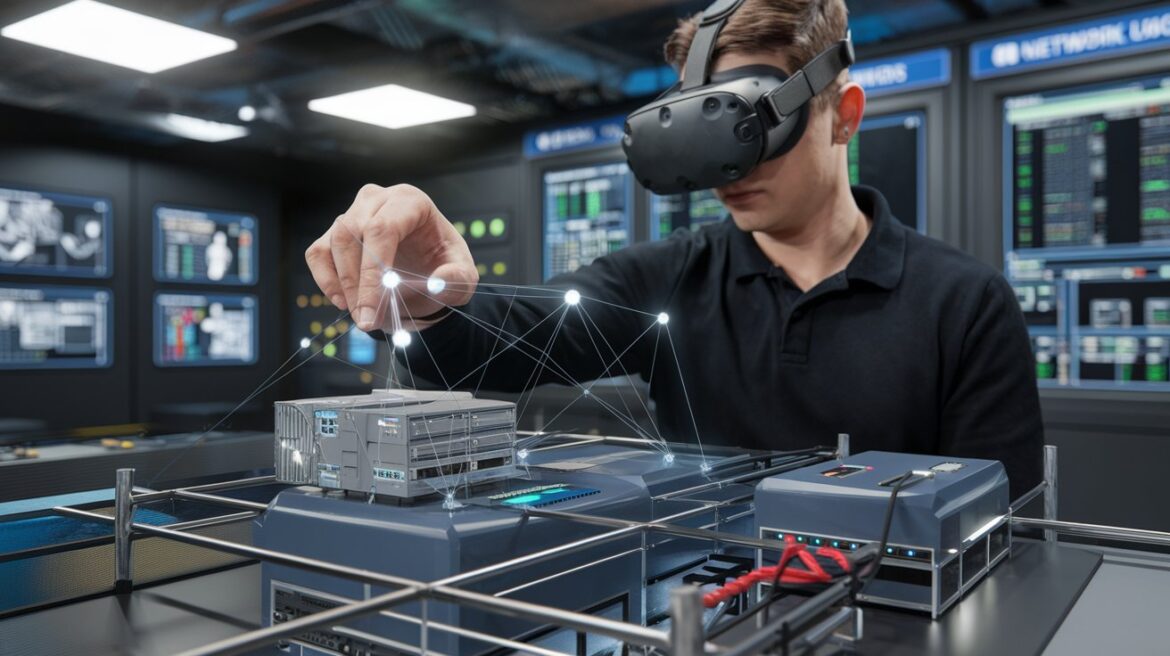In today’s rapidly evolving digital landscape, effective network operations require more than traditional classroom training. Virtual Reality (VR) is emerging as a transformative tool that offers immersive, interactive training environments for network operators. VR network training provides realistic simulations of complex network scenarios, enabling hands-on practice without the risks or costs associated with live systems. This post explores how VR is revolutionizing network operations training and simulation, driving operational excellence and enhancing cybersecurity readiness.
The Need for VR in Network Training
Realistic Scenario Simulation
- Complex Network Environments: VR allows operators to navigate simulated data centers, network control rooms, and incident response scenarios that mirror real-world challenges.
- Safe Learning Environment: Trainees can practice responding to cyberattacks, hardware failures, and configuration errors without impacting live systems.
Enhanced Skill Development
- Interactive Learning: Immersive VR experiences engage learners by providing real-time feedback and interactive tasks that traditional training methods lack.
- Retention and Recall: Studies show that experiential learning in a virtual environment improves information retention and helps trainees quickly recall procedures during actual emergencies.
Cost and Efficiency Benefits
- Reduced Downtime: VR training minimizes the need to pull operators away from their jobs for live training, ensuring continuous network operation.
- Scalability: VR platforms can be updated and scaled easily to incorporate new technologies, protocols, and emerging threats.
Key Components of a VR Network Training Program
1. Immersive Simulation Software
- Real-World Scenarios: Software that replicates network topologies, data center layouts, and typical network traffic patterns.
- Interactive Modules: Gamified elements that challenge users to troubleshoot issues and perform routine maintenance tasks in a simulated environment.
2. Integrated Hardware Solutions
- VR Headsets and Controllers: High-quality VR equipment to ensure immersive visual and tactile experiences.
- Haptic Feedback Devices: Tools that simulate real-world sensations, such as the feel of physical hardware components, enhancing the training realism.
3. Real-Time Analytics and Feedback
- Performance Metrics: Tracking trainee progress and providing real-time feedback on decisions and actions.
- Adaptive Learning: Incorporating AI to adjust the difficulty level and tailor training scenarios based on individual performance.
Implementation Best Practices
Start with a Pilot Program
- Evaluate Impact: Begin with a small-scale pilot to assess the effectiveness of VR training modules and gather feedback from participants.
- Iterative Improvements: Use insights from the pilot to refine scenarios, adjust difficulty levels, and ensure smooth integration with existing training frameworks.
Ensure Interoperability and Scalability
- Integrate with Existing Systems: Ensure that VR training modules can seamlessly integrate with current network management and cybersecurity tools.
- Plan for Scalability: Design the VR platform to be easily updated and expanded as network environments and threat landscapes evolve.
Prioritize User Experience
- Engaging Content: Develop engaging, realistic scenarios that resonate with trainees.
- Accessibility: Ensure that VR training is accessible to all relevant teams, including remote employees, by providing cloud-based training options.
Virtual reality is reshaping network operations training by providing immersive, realistic simulations that enhance the skills of network operators. By reducing training risks, improving incident response, and fostering a proactive cybersecurity culture, VR network training is an essential component of modern digital transformation strategies. Embrace VR-based training to empower your teams, streamline network operations, and stay ahead in an increasingly complex digital landscape.
